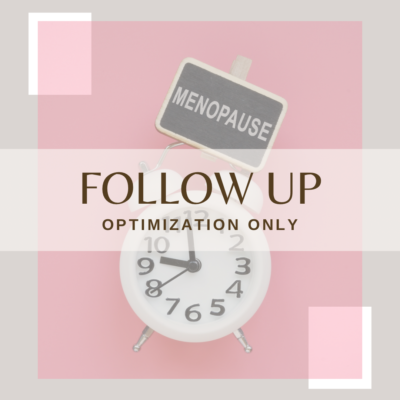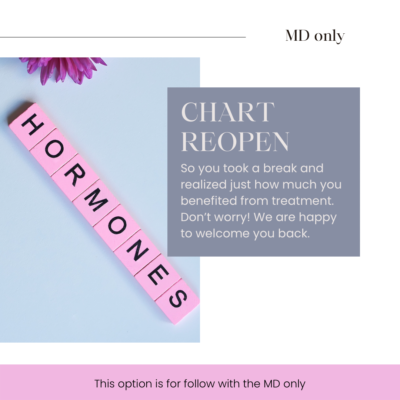We hear talk of bone density loss as we age, we know we need more calcium to prevent that dreaded osteoporosis, but what if I told you we are doing it all wrong. What if I said rogue calcium was the issue in our bone loss. Pretty big statement but one that had been researched quite thoroughly by Dr Kate Rhéume.
When we look at the vitamin K2 we learn so much more about the function of vitamin D and calcium, this is all part of what we call supplement stacking. These all need to work together to utilize the full benefits in a safe way. For those who follow me you know I am not a fan of supplementation unless needed for short term to get you on track. I prefer to use food, herbs and lifestyle changes to give the body what it needs. This means digging into controversial studies, finding out about food combining and the best combinations of vitamins and minerals to maximize the benefits.
I’m sure some of you have heard of the controversy surrounding over calcium supplementation. Case studies have shown some concerning data, especially when looking at those who have jumped onto the high dose vitamin D bandwagon. Both of these are cause for concern unless we are balancing them out with K2, which is very different than the K1 we get from green leafy vegetables. You see our body does produce K1 quite easily, K2 on the other hand is a bigger issue.
K2 works with vitamin D, with all the awareness regarding our need for D we seem to have lost it’s much needed counterpart. If you are on calcium supplementation or high dose vitamin D you need to be supplementing with K2, in one shape or another.
How is vitamin K1 different than K2. Vitamin K1 is a clotting vitamin, we can get plenty of this from green leafy vegetables, although our body recycles it so we do not need to worry too much about this. It is almost impossible to be deficient in this. Although when k1 was discovered, k2 was also discovered but thought to be interchangeable and therefore not of great concern. Unfortunately you cannot get K2 from green leafy vegetables, and it is not something we recycle which means we are quite capable of becoming deficient in it. It also does not have the same function in the body, it is not specifically a clotting vitamin.
It s quite possible to be deficient in K2 which a great number of the population is, yet has gone undiagnosed.
There is such confusion regarding these two nutrients in the medical community with regards to health benefits, food sources and actions in the body. We are able to convert a small amount, about 5% of K1 into K2 however this is not enough. Our needs are much greater. We need to rely on getting this into our diet pre-formed, this means it is an essential nutrient.
We don’t specifically test the blood for K2 but rather how many k2 proteins are activated. This means it is moving calcium from one spot to another, preventing cancer cells from growing, boosting testosterone etc. If those proteins are not doing their job it is a sign that K2 is not present or doing it’s job.
There are some tests being done in academic settings, they are not at this time however available for practitioners.
You may be wondering why I keep mentioning K2 when I should be speaking about calcium. Here is the answer. One of the main roles of K2 is to control where calcium goes in the body. Vitamin D helps us absorb calcium but once it has been absorbed there vitamin D has no control over WHERE that calcium goes. Some of it ends up in our bones, where we want it to be but some of it can end up in dangerous places such as soft tissues, kidney stones, arteries, and heal spurs. Since calcium has a tendency to deposit all throughout the body we need K2 to stop that. It will take the calcium, once it has been absorbed, and guide it to the places it needs to be- like our bones. It will also keep it OUT of the places we don’t want it to be. It has even been shown to reverse soft tissue calcifications like arterial calcifications.
It also has a role to play in cell growth regulation, this means cancer prevention and protection. Making sure certain cells don’t grow out of control.
It seems to also have roles to play in insulin sensitivity. It is very important for dental/ oral health, children’s growth from pre-natal all the way through childhood. It also has been shown to increase testosterone which is great for men, and runners especially who see their testosterone reduced, (sorry).
Some of the conditions most commonly seen where this comes into consideration is heart disease, more specifically hardening of the arteries. This means excessive build up of calcium in the arteries. Wether you are supplementing with calcium or not this is an issue. We want to make sure calcium is not getting to the wrong places, like heart valves, etc. This is a huge problem.
I’ve seen people come in with genetic testing where they are predisposed to a specific type of cancer. When we see this we want to look at preventative measures, turning off those genes but also making sure we are supporting the systems which prevent this from becoming a gene which is turned on. K2 at a higher dose has been shown to be beneficial in this regard, turning off the cell cycle, you can’t really overdo it either which is a great thing -unlike vitamin D or calcium.
For anyone who has cancer in their family, and let’s face it most of us nowadays are facing this, you may want to ensure you are taking this into account. This is a nutrient where if cancer is a concern, especially prostate, leukemia or breast you will want to be extra aware of this addition to your arsenal. For more information on this I would suggest a DNA panel to see how well you utilize vitamin D, which type is best for your DNA and of course which genes you carry that leave you predispositioned for specific cancers so we can turn those genes off.
When we look at osteoperosis we see that the main recommendation revolves around calcium. What we are seeing is that calcium disorders may not have as much to do with calcium as they do with fat soluble vitamins, such as K2.
We do what we think would be the right thing, we supplement with calcium because we have low bone mineral density and this is a calcium issue. Logic dictates that taking calcium helps and so if a little was good, taking more was better. So this is what we did. We took more, and more, and more. The doses of 1200-1500 mg of calcium are absolutely ridiculous. Even though calcium levels are low taking more is not the right answer. If it were we would be able to cure osteoperosis, but this isn’t the case is it.
Experts are now looking at low calcium as a symptom of other issues in the bones. If we heal those underlying issues we then target the symptoms as well. Healing the bones allows them to hang on to the calcium. Studies have shown that those taking calcium supplements have a 20% – 30% greater risk and greater instance of heart attack and stroke.
There is a significant amount of bone that is not mineral, but rather dynamic living tissue that is protein. When it is doing it’s job it will keep the calcium where it needs to be, in our bones.
K2 helps activate the proteins in the bone so they can grab and hold onto the calcium, keeping it where it is needed most.
Vitamin D helps us absorb the calcium, vitamin K2 directs and helps keep it in the bones. I say it repeatedly so that it sinks in. We need to dispel the old calcium myth, the old mentality needs to go and the new K2 awareness needs to take over.
I’m not a fan of supplementing with calcium, we can get plenty from our diet. If you are suffering from osteopenia or osteoperosis, depending on your diet, there could be benefit from taking a small dose of 500 mg per day as recommended by certain medical professionals. Again it is not a lack of calcium issue here in North America, we have the highest rates of calcium. Yet we also have extremely high rates of osteoperosis.
As long as you are getting enough vitamin D and K2 you don’t need to be taking these high doses everyday, 1000 mg is not something I would ever recommend. We have this scared mentality where we think if we don’t supplement with calcium we will end up with brittle bones as we age. There was a study where dietary intake and even supplementation of calcium did not line up with osteoperosis risk. Many believe that if they knew anything at all it was we needed calcium for strong bones.
It isn’t that we do not have enough of it in the body, it is that we are not utilizing it, enter in K2. It needs to be placed and kept in the right places, period.
Vitamin D research has been the focus, where vitamin k2 is a solid 20 years behind in research. It will eventually catch up but do you really want to be that behind in the knowledge?
We are taking vitamin D in increasingly large doses. I’ve seen dosages raise as high as 4000 IU all the way up to 10,000 IU daily. There are even cases, although more rare, of 50,000 IU per day. This to me is insane especially when we aren’t balancing this out with k2. There is a risk of D toxicity and worse heart attack or death.
When you see this you will also see very commonly see someone have a massive heart attack. When we take a look at the calcification of all the arteries it is no shock. The higher the dose, the less time it will take to see the calcification of the arteries, which is a heart attack or stroke waiting to happen. You can see in the tests how high the calcium levels will be. We think we have this healthy diet, but we are simply continuing to absorb calcium. The problem is that calcium needs to go somewhere, K2 helps to put it where it needs to go and stop this from happening.
As for ratio regarding vitamin D and vitamin K2, the studies have been done in isolation rather than together so it is hard to say. Certain experts recommend for every 1000 IU of vitamin D you will want to increase your vitamin K2 intake by 100 micrograms of mk7 or 1000 micrograms of mk4.
When we look at what levels should we be looking for when we have our vitamin D levels are tested it depends on who you speak with. Between 30- 40 is fairly well recognized, but again some have other theories that we may be measuring the wrong thing to begin with. Chris Masterjohn is someone to take a look at if you want more information regarding this theory.
Too little and we have problems, too much and we have problems. There is a “sweet spot” depending on your vitamin K2 intake. The more vitamin D you take, the more vitamin K2 dependant proteins your body makes. This means you are not only increasing your demand for but also your ability to benefits from taking it.
As a side note, vitamin A is also involved here. According to Dr Kate, vitamin D and vitamin A are like the gas and breaks of the car. There has been some bad press regarding vitamin A and that we should avoid it because it antagonizing the vitamin D. But you could say the breaks antagonize the gas in your car, you still wouldn’t want to drive your car without both would you?
Food to be eating for vitamin K2:
- Grass fed organ meat like liver, once a week. It has to be grass fed. We aren’t very good at converting k1 from green leafy vegetables, but animals like cows, chickens and wild game are. If you don’t want to eat it then go for desiccated liver supplements. You want to be aware that seasonally you will get more from grass fed in the summer then you would in the winter due to the diet. Eggs wont be a great source in the winter, however in the summer grass fed eggs could be just fine, specifically egg yolks where it is found.
- Goose meat is much higher than any other bird, including turkey and chicken. Grain feeding has really decreased our k2 consumption, keep this in mind. Refrigeration also plays a role, we use to ferment everything which provided us with the necessary bacteria.
- Some fermented foods, not all, are great sources of vitamin k2.
- You will want to also make sure you have good gut health, although only about 5% of k1 is converted to k2 in our bodies, it does happen in our gut.
- Eating natto 2 – 3 times a week, a high content of K2 found in a food source. You can can make your own natto without using soy but rather other legumes such as turtle beans, black beans, chickpeas etc with the natto cultures. It isn’t the soy itself but rather the bacteria that make the natto so high in K2. Tons of recipes on the web for this. It is an acquired taste, and texture though I will forewarn you.
- Bugs are the greatest source of k2, this means crickets will likely become the newest health trend, you heard it here first!
- Emu oil also appears to be high however I don’t know the studies behind this.
So many of the conditions that we accept in our society as a part of aging may in fact be long term nutrient deficiencies.






I take K2 w/ D3 and have seen good results in my…. TEETH! Great, informative post!
Very interesting. I can’t take calcium because of a history of kidney stones. I wonder of K2 could play into this scenario???
Hi Linda,
Ther have been improvements seen when supplementing with k2 in this regard yes.